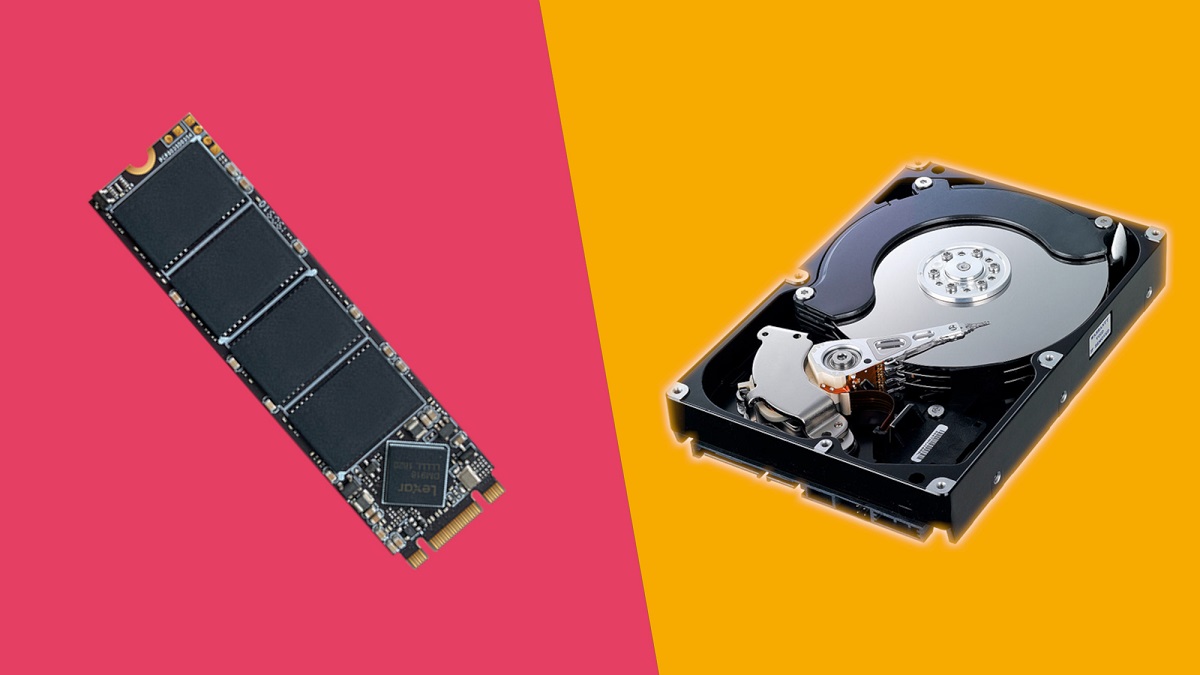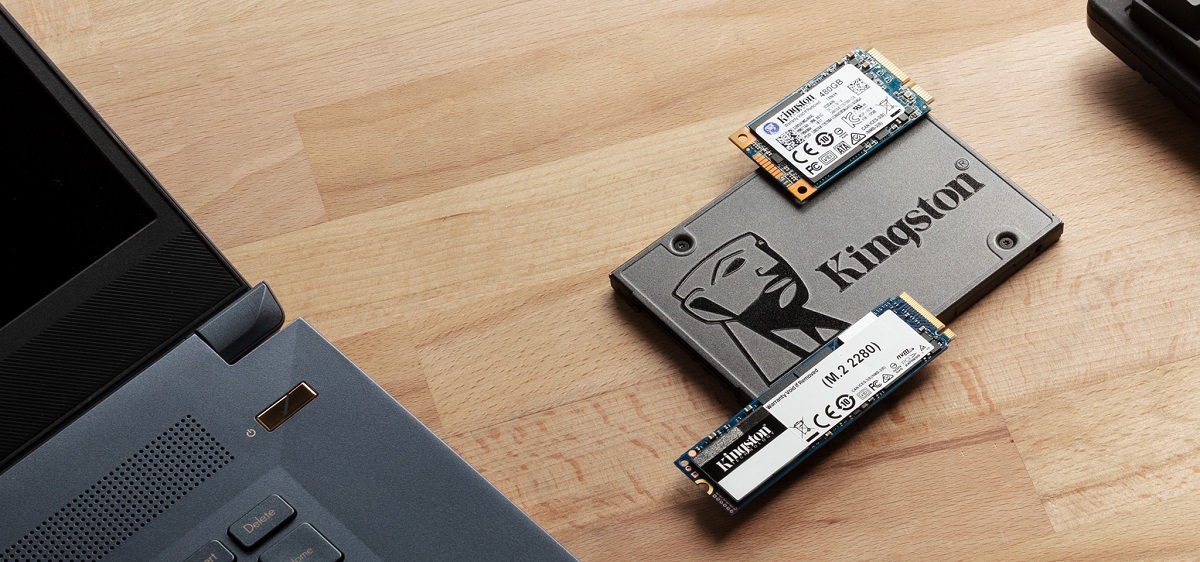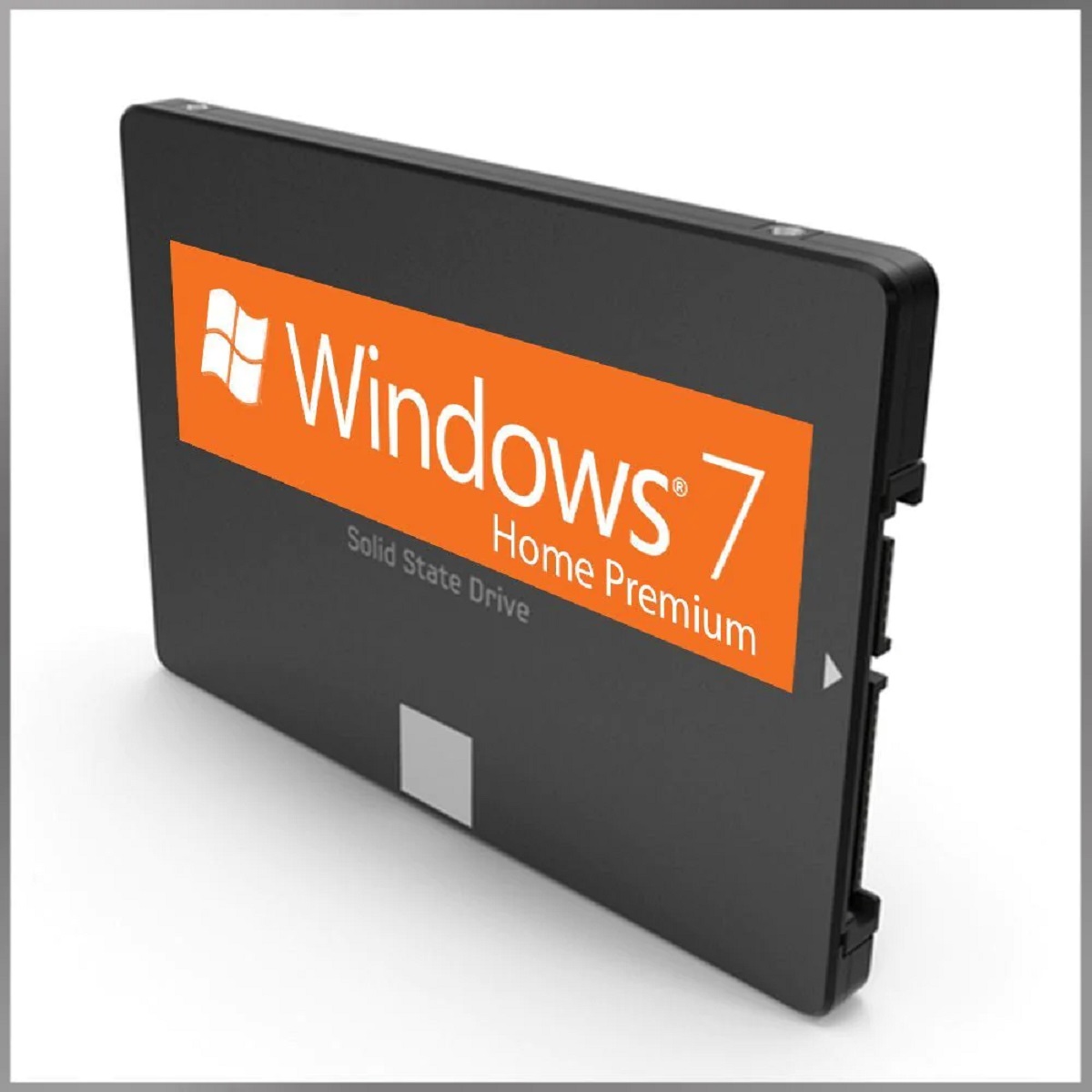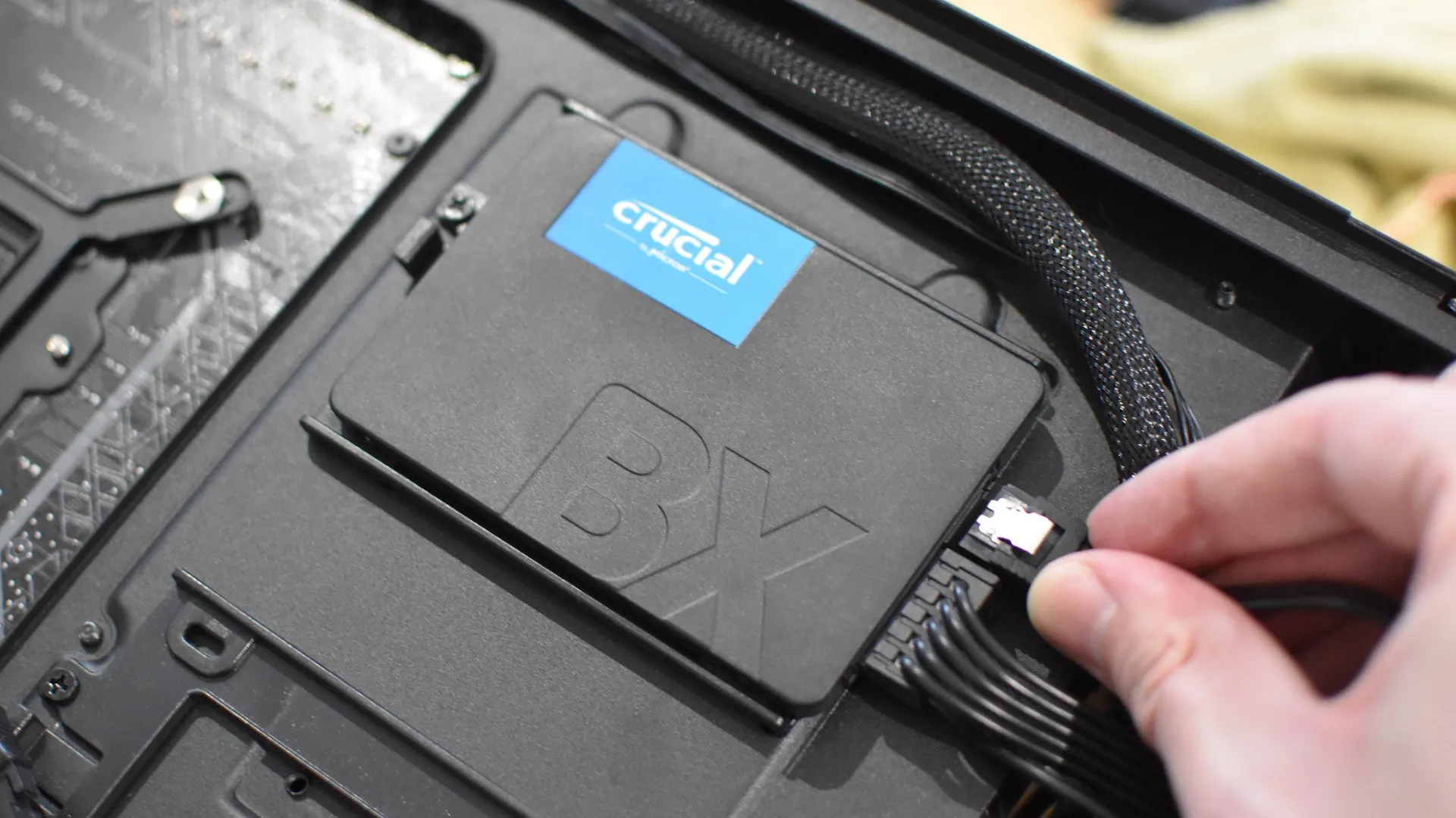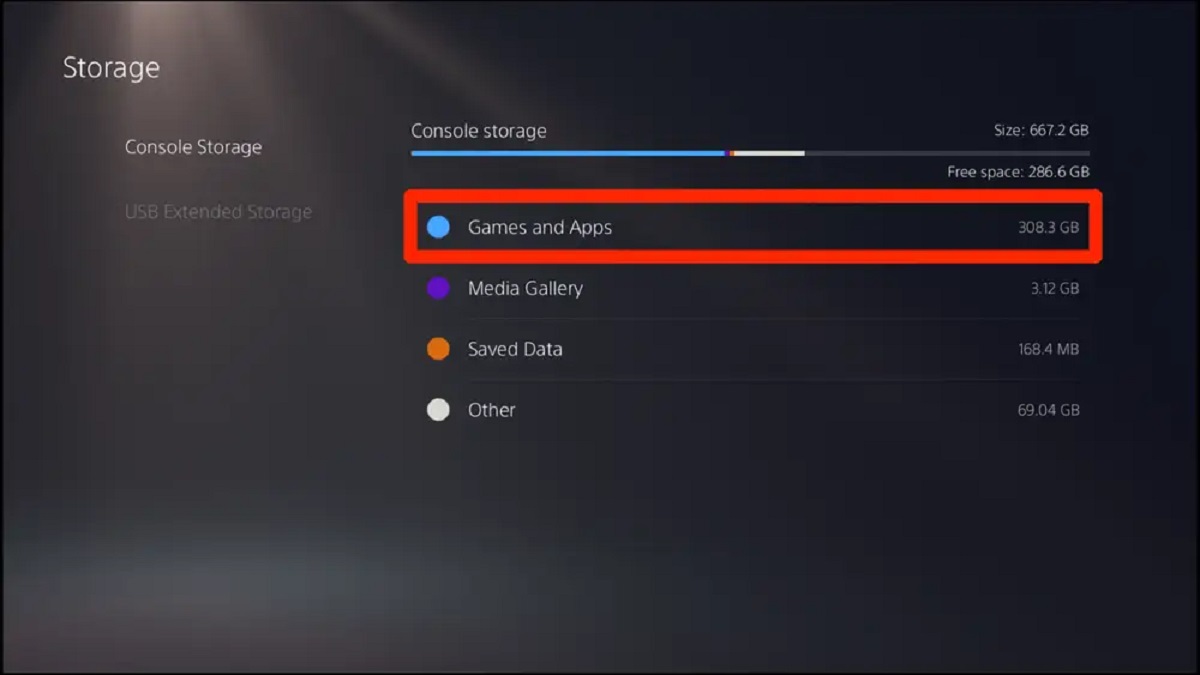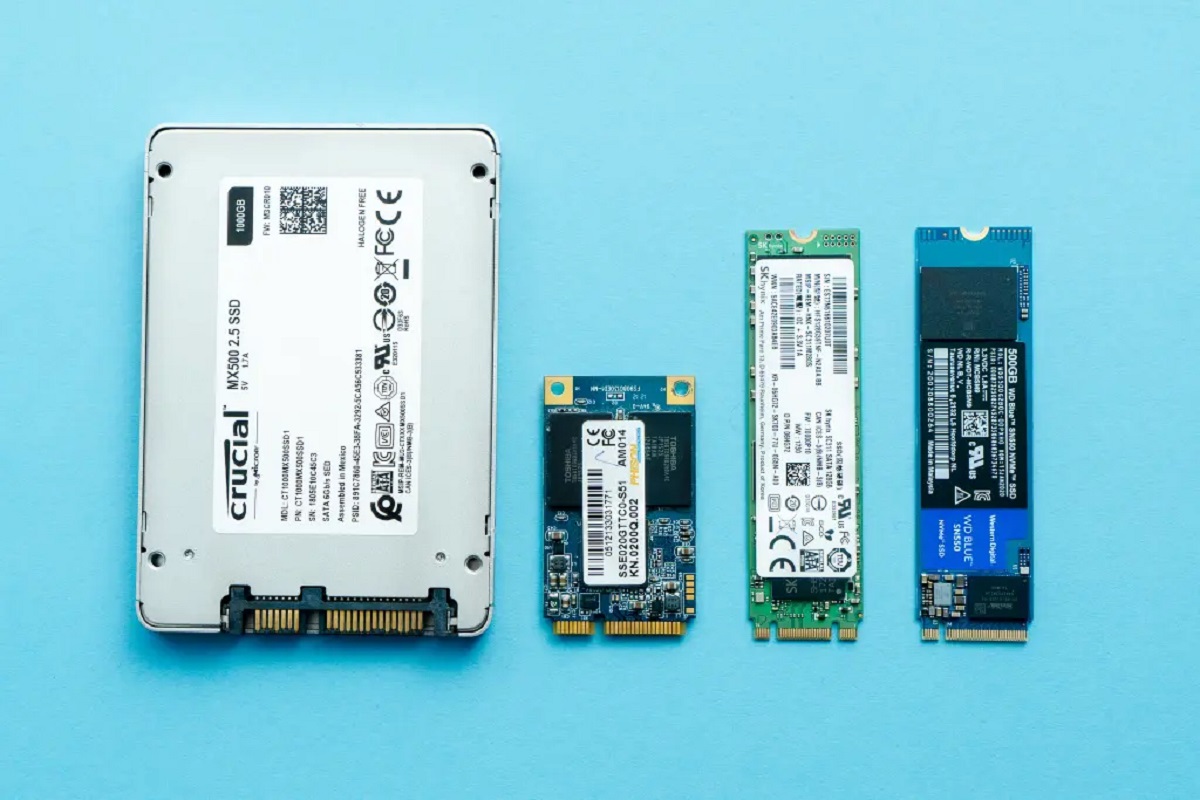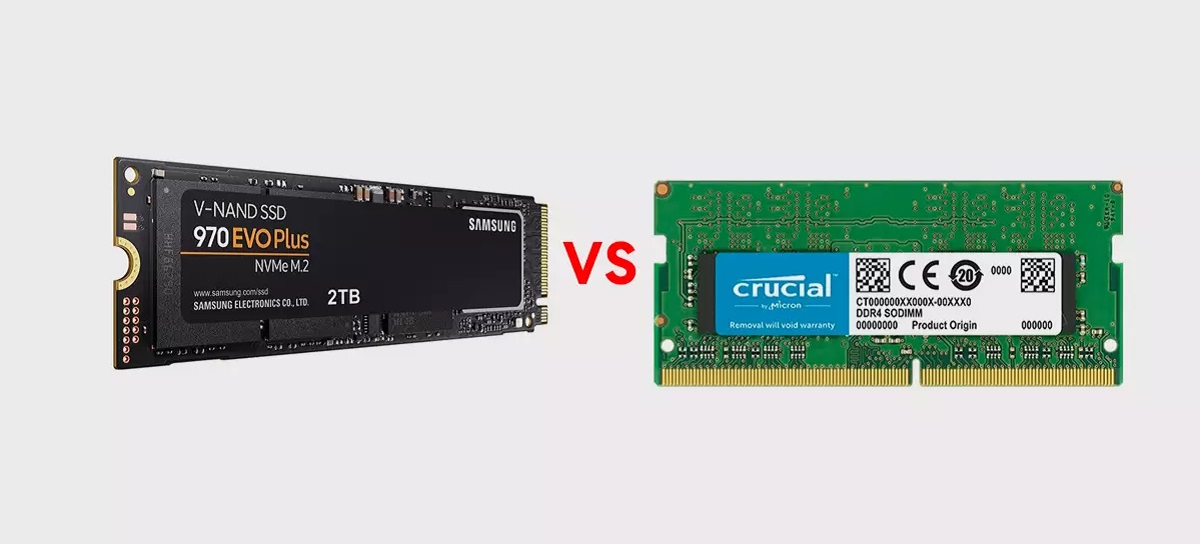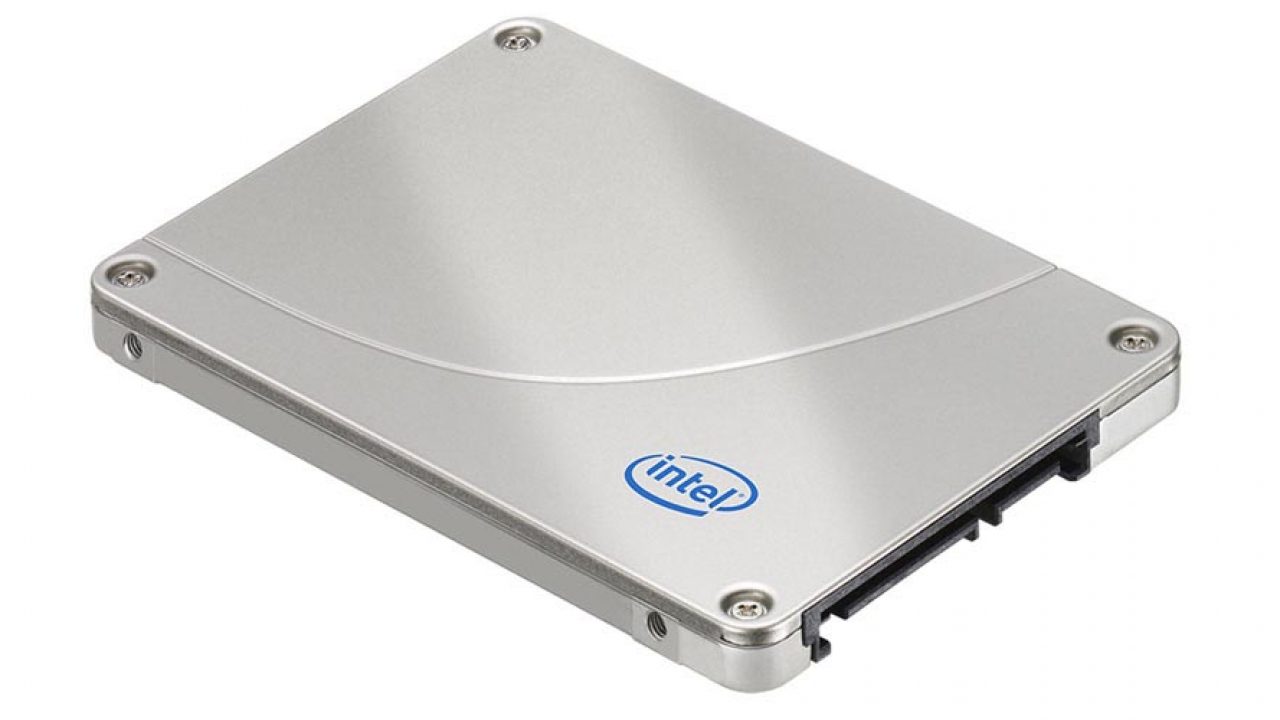Introduction
Welcome to the world of storage drives, where the age-old Hard Disk Drive (HDD) faces fierce competition from a newer and faster contender – the Solid-State Drive (SSD). Whether you’re upgrading your computer or considering a new purchase, understanding the difference between an SSD and an HDD can help you make an informed decision.
SSDs and HDDs both serve the purpose of storing and retrieving data, but they differ significantly in terms of technology, performance, and price. Traditional HDDs use spinning platters and magnetic heads to read and write data, while SSDs rely on flash memory chips.
So, how much of a difference does an SSD make? The answer lies in the speed, performance, power consumption, durability, and other factors. In this article, we will explore the benefits and drawbacks of SSDs compared to HDDs to help you understand why SSDs have become the go-to choice for many tech enthusiasts and professionals.
Definition and Benefits of SSD
An SSD, or Solid-State Drive, is a storage device that uses NAND flash memory to store data, rather than the spinning platters and magnetic arms of a traditional HDD. This flash memory technology allows for much faster access to data, resulting in quicker boot times, faster application and file loading, and overall improved performance.
One of the main benefits of SSDs is their incredible speed. Unlike HDDs, which rely on mechanical movements to read and write data, SSDs have no moving parts, enabling them to access and transfer information at lightning-fast speeds. This translates into significantly reduced wait times when booting up your computer, launching applications, or loading files.
Another advantage of SSDs is their reliability and durability. Since SSDs have no moving parts, they are less susceptible to mechanical failure, making them more reliable and less prone to data loss. Additionally, SSDs are more resistant to physical shocks and vibrations, making them ideal for laptops and portable devices.
In terms of power consumption, SSDs are more energy-efficient compared to HDDs. The lack of moving parts means less power is required to operate an SSD, resulting in longer battery life for laptops and lower energy costs for desktop computers. This can be especially beneficial for users who value mobility or are conscious of their environmental footprint.
Furthermore, SSDs produce less heat during operation than HDDs. The absence of spinning platters means SSDs generate less friction and therefore require less cooling. This not only contributes to a more comfortable working environment but also reduces the strain on system cooling fans, leading to quieter computing experiences.
Lastly, SSDs are becoming increasingly affordable. While they were initially more expensive than HDDs, the cost per gigabyte of storage has significantly decreased over the years, narrowing the price gap between the two technologies. As a result, SSDs have become a viable option for both budget-conscious consumers and performance-oriented professionals.
SSD vs HDD: Speed and Performance Comparison
When it comes to speed and performance, SSDs outshine HDDs in every aspect. The lack of mechanical components in SSDs allows for near-instantaneous data access, leading to significantly faster read and write speeds.
Boot time is one area where SSDs excel. While HDDs require time to spin up the platters and position the magnetic heads, SSDs have no such delay. As a result, computers equipped with SSDs can start up in a matter of seconds, providing users with near-instant access to their desktop.
Application and game loading times are also greatly improved with SSDs. The faster data access and transfer speeds of SSDs mean that software and games can load much more quickly, reducing waiting times and providing a smoother user experience. This is particularly noticeable in resource-intensive applications and games that require large files to be loaded.
In addition to faster boot and loading times, SSDs offer superior file transfer speeds when compared to HDDs. SSDs can transfer data several times faster than HDDs, making tasks like copying large files or backing up data much quicker and more efficient. This is particularly beneficial for professionals who work with large multimedia files or regularly perform data-intensive tasks.
It’s important to note that while SSDs provide faster performance in reading, writing, and transferring data, their speed can vary depending on the specific model and technology used. PCIe-based SSDs, for example, can offer even faster speeds compared to SATA-based SSDs, but they may come at a higher price point.
In contrast, HDDs, due to their mechanical nature, experience limitations in speed and performance. The spinning platters and moving magnetic heads introduce latency and seek times, resulting in slower data access and transfer speeds compared to SSDs. This can impact overall system responsiveness and lead to longer wait times for tasks such as booting up or accessing files.
In summary, SSDs have a clear advantage over HDDs when it comes to speed and performance. Whether it’s faster boot times, quicker application and game loading, or speedier file transfers, SSDs consistently deliver superior performance and responsiveness compared to their traditional HDD counterparts.
Boot Time Comparison: SSD vs HDD
When it comes to boot time, or how long it takes for a computer to start up and become usable, SSDs have a significant advantage over HDDs. The lack of moving parts in SSDs allows them to access data quickly, resulting in significantly faster boot times compared to traditional HDDs.
With an SSD, a computer can go from being completely powered off to fully operational within a matter of seconds. This means that users can get to work or start using their computer much more quickly, without having to wait for the operating system and applications to load.
In contrast, HDDs require time to spin up the platters and position the magnetic heads before data can be accessed. This mechanical process adds a noticeable delay to the boot time. In many cases, it can take several minutes for a computer with an HDD to fully boot up and become usable.
The faster boot time provided by SSDs is particularly beneficial for users who value efficiency and productivity. Whether it’s for professionals who need to start working quickly or individuals who simply prefer a seamless computing experience, the reduced boot time of an SSD can make a noticeable difference in overall user satisfaction.
Additionally, SSDs are not only faster when it comes to the initial boot-up, but they also maintain their speed consistently over time. This means that even as the SSD fills up with data, the boot time remains relatively unaffected. On the other hand, HDDs can experience a slowdown in boot time as they become more filled with files and fragmented.
It’s worth mentioning that the boot time can also depend on other factors, such as the computer’s hardware specifications and the complexity of the operating system. However, the use of an SSD as the primary storage device can significantly reduce the time it takes for a computer to start up and become ready for use.
In summary, SSDs offer a substantial improvement in boot time compared to HDDs. The faster access to data provided by SSDs allows computers to start up and become fully operational within seconds, providing users with a more efficient and responsive computing experience.
Application and Game Loading Time Comparison: SSD vs HDD
When it comes to loading applications and games, SSDs once again prove their superiority over HDDs. The faster data access and transfer speeds of SSDs result in significantly shorter loading times, providing users with a more seamless and immersive experience.
With an SSD, applications launch almost instantly. Whether it’s opening a web browser, launching a photo editing software, or running a productivity tool, SSDs can retrieve the necessary data quickly, allowing users to start using the application without delay. This means less time waiting for applications to load and more time being productive.
In the realm of gaming, SSDs are a game-changer. Modern games often require large amounts of data to be loaded before gameplay can begin, such as textures, 3D models, and sound files. With an SSD, these files can be retrieved and loaded at lightning-fast speeds, significantly reducing the loading times between levels or when starting a new game.
Aside from reducing loading times, SSDs also contribute to a smoother gaming experience. As games become more visually complex and demanding, having an SSD ensures that textures and assets are loaded quickly, minimizing stuttering and lag during gameplay. This can make a noticeable difference in the overall fluidity and responsiveness of the gaming experience.
On the other hand, HDDs struggle when it comes to loading applications and games quickly. The mechanical nature of HDDs introduces latency and seek times, causing longer loading times. Users may experience noticeable delays when launching applications or waiting for games to load, which can be frustrating and disruptive.
Furthermore, HDDs can be a bottleneck in gaming, leading to longer loading screens and potential gameplay interruptions as data is read from the hard drive. This can result in decreased immersion and a less enjoyable gaming experience, particularly in games that require frequent loading of data during gameplay.
In summary, SSDs offer a significant advantage in terms of application and game loading times compared to HDDs. The faster data access and transfer speeds of SSDs result in near-instantaneous application launching and significantly reduced loading times for games. Whether it’s for productivity or gaming, an SSD can greatly enhance the overall user experience by minimizing waiting times and providing a more seamless and immersive computing experience.
File Transfer Speed Comparison: SSD vs HDD
When it comes to transferring files, SSDs outperform HDDs with their blazing-fast speeds. The lack of moving parts in SSDs allows for quick and efficient data transfer, making tasks such as copying, transferring, and backing up files significantly faster and more efficient.
SSDs excel in both sequential and random file transfers. Sequential transfers involve reading or writing large consecutive blocks of data, such as when copying a movie file. SSDs can achieve transfer speeds several times faster than HDDs, allowing for swift completion of file transfer tasks.
Random transfers, on the other hand, involve reading or writing smaller files or scattered blocks of data. This is a common scenario when dealing with documents, images, or program files. SSDs, with their near-instantaneous access to data, perform exceptionally well in random file transfers, reducing the time it takes to access and transfer individual files.
Meanwhile, HDDs, with their mechanical components, are more limited in terms of file transfer speed. The spinning platters and moving magnetic heads introduce latency and seek times, causing slower transfer speeds compared to SSDs. This can be particularly noticeable when dealing with large numbers of smaller files or fragmented data.
Additionally, the fragmented files on an HDD can result in further slowdowns as the drive head needs to seek different areas of the platter to read or write the file fragments. This fragmentation can cause noticeable decreases in copy speeds and overall file transfer efficiency. SSDs, with their lack of physical movement, are not affected by fragmentation and maintain consistent speed regardless of the file’s location on the drive.
Whether you’re transferring files for work or personal use, SSDs can significantly streamline the process. The high-speed data transfer capabilities offered by SSDs allow users to complete file transfers in a fraction of the time it would take with an HDD. This not only saves time but also improves overall productivity and efficiency.
It’s important to note that the actual file transfer speeds will depend on various factors, including the specific SSD or HDD model, the interface used (such as SATA or PCIe), and the hardware configuration of the computer. However, in general, SSDs provide a substantial advantage in terms of file transfer speed and efficiency, making them an optimal choice for users who frequently deal with large file transfers or work with data-intensive tasks.
Power Consumption and Heat Generation Comparison: SSD vs HDD
When it comes to power consumption and heat generation, SSDs have a clear advantage over HDDs. The lack of moving parts in SSDs allows for more efficient power usage and significantly lower heat generation, resulting in benefits for both energy consumption and system cooling.
SSDs consume less power compared to HDDs due to their solid-state nature. Unlike HDDs, which require power to spin up the platters and move the magnetic heads, SSDs have no mechanical parts that need continuous power. This translates into reduced energy consumption, making SSDs an attractive choice for users concerned about energy efficiency and longer battery life for laptops.
Furthermore, the lower power consumption of SSDs results in less heat generation. HDDs can generate heat as a byproduct of the mechanical movement involved in reading and writing data. On the other hand, SSDs generate minimal heat since they rely on flash memory chips to store and access data, which do not produce significant amounts of heat.
This reduction in heat generation has several benefits. First, it contributes to a cooler and more comfortable computing environment. With less heat being generated by the storage drive, the overall temperature inside the computer case remains lower. This can result in quieter and more efficient cooling, as system fans do not need to work as hard to maintain optimal operating temperatures.
Reducing heat generation is particularly important in laptops and other portable devices. With their limited space and potential for poor heat dissipation, excessive heat can lead to performance throttling, system instability, or even hardware damage. By using SSDs, which generate minimal heat, the risk of heat-related issues is significantly reduced.
In summary, SSDs excel in both power consumption and heat generation compared to HDDs. Their solid-state nature allows them to consume less power, making them more energy-efficient and beneficial for longer battery life. Additionally, the absence of moving parts in SSDs results in minimal heat generation, contributing to a cooler and more comfortable computing environment while mitigating potential heat-related issues.
Durability and Reliability Comparison: SSD vs HDD
When it comes to durability and reliability, SSDs have a significant advantage over HDDs. The absence of moving parts in SSDs reduces the risk of mechanical failure, making them more durable and reliable for long-term use.
HDDs rely on mechanical components such as spinning platters and moving magnetic heads to read and write data. These mechanical parts are susceptible to wear and tear over time, increasing the likelihood of failure. Vibrations, shocks, and physical impacts can also lead to damage or data loss in HDDs.
In contrast, SSDs do not have any moving parts. Instead, they use solid-state NAND flash memory technology to store and retrieve data. The lack of mechanical components in SSDs makes them more resistant to physical damage and less prone to failure caused by shock or vibration. This makes SSDs particularly suitable for portable devices such as laptops, where they can withstand the rigors of being carried around.
Furthermore, SSDs have lower failure rates compared to HDDs. The lack of moving parts in SSDs reduces the risk of mechanical failure, which is a common cause of HDD failures. This means that SSDs are more likely to continue operating reliably for extended periods, with a reduced likelihood of data loss or the need for frequent replacements.
SSDs also have an advantage when it comes to data integrity. The data stored in an SSD is not susceptible to magnetic fields or head crashes, common risks associated with HDDs. In addition, SSDs employ advanced error correction algorithms to ensure the accuracy and integrity of the stored data, minimizing the chances of data corruption or loss.
It’s important to note that while SSDs are generally more durable and reliable than HDDs, they still have a finite lifespan. Each NAND flash memory cell within an SSD can only endure a certain number of write cycles before it becomes less reliable. However, manufacturers have implemented various technologies, such as wear leveling and over-provisioning, to distribute writes evenly across the drive and extend its overall lifespan.
In summary, SSDs offer greater durability and reliability compared to HDDs. The absence of moving parts in SSDs reduces the risk of mechanical failure, making them more resistant to physical damage and better suited for portable devices. Additionally, SSDs have lower failure rates and employ advanced error correction mechanisms to ensure data integrity, providing users with a more reliable and secure storage solution.
Noise and Vibration Comparison: SSD vs HDD
When it comes to noise and vibration, SSDs have a significant advantage over HDDs. The lack of moving parts in SSDs results in virtually silent operation, while HDDs can generate noise and vibration during normal use.
HDDs rely on spinning platters and moving magnetic heads, which produce mechanical noise as they operate. This noise can range from a low hum to noticeable clicks, particularly during intense read and write activities. The noise level can vary depending on the specific HDD model, but it can be a concern for users seeking a quiet computing environment.
In contrast, SSDs have no moving parts, resulting in silent operation. Without any mechanical components that can generate noise, SSDs provide a noiseless computing experience. This can be particularly beneficial for users who value a quiet working environment or those using their computers in noise-sensitive environments such as libraries or recording studios.
Vibration is another factor to consider when comparing SSDs to HDDs. HDDs are prone to generating vibration due to the rotation of the platters and movement of the heads. These vibrations can transfer to the computer case, contributing to overall system noise and potential discomfort for users.
SSDs, on the other hand, do not generate significant vibrations during operation. The absence of moving parts makes SSDs immune to the vibration-related issues commonly associated with HDDs. This can be especially advantageous for users who require a stable and vibration-free computing environment, such as professionals working with sensitive equipment or individuals concerned about system longevity.
Aside from offering a quieter and vibration-free experience, the lack of noise and vibration in SSDs can have additional benefits. First, it can enhance the overall user experience by providing a more serene and distraction-free working environment. Second, it can contribute to the longevity and reliability of other components in the system, such as delicate electronic circuits or mechanical parts, by reducing the exposure to vibrations that could cause premature wear or damage.
In summary, SSDs have a clear advantage over HDDs when it comes to noise and vibration. The absence of moving parts in SSDs leads to silent operation, providing users with a quieter computing experience. Additionally, SSDs generate minimal to no vibrations, contributing to a more stable and comfortable working environment while protecting other components from potential damage or wear caused by vibration.
Price Comparison: SSD vs HDD
Price is an important consideration when choosing between an SSD (Solid-State Drive) and an HDD (Hard Disk Drive). Historically, SSDs were more expensive than HDDs, but over time, their prices have decreased, narrowing the gap between the two technologies.
SSDs typically have a higher initial cost compared to HDDs. This is primarily due to the more advanced technology involved in manufacturing SSDs, as well as the higher cost of NAND flash memory. As a result, SSDs are often seen as a premium option, especially when it comes to larger storage capacities.
On the other hand, HDDs are generally more affordable, especially at higher storage capacities. The mature technology used in HDDs has resulted in lower production costs, making them more accessible for users on a tighter budget or those who require large amounts of storage space.
However, it’s important to consider the overall value when comparing SSDs and HDDs. While SSDs may have a higher upfront cost, they offer significant advantages in terms of speed, performance, durability, and power efficiency. These benefits can greatly enhance the overall user experience, especially for those who depend on fast load times for applications and files.
Furthermore, the cost of SSDs has been steadily decreasing over the years, making them more affordable and appealing to a wider audience. As technology advances and economies of scale come into play, the price per gigabyte of SSD storage continues to drop, narrowing the gap between SSDs and HDDs.
When making a decision, it’s essential to assess your specific needs and priorities. If you require faster performance, improved reliability, and more energy efficiency, investing in an SSD may be worth the initial higher cost. On the other hand, if budget-friendly storage capacity is your primary concern, an HDD may offer a more cost-effective solution.
Ultimately, the price comparison between SSDs and HDDs will depend on factors such as storage capacity, brand, and specific model. It’s crucial to weigh the benefits and costs of each technology and consider your individual requirements before making a decision.
In summary, while SSDs generally have a higher initial cost compared to HDDs, their advantages in terms of speed, performance, and reliability make them a compelling choice for many users. As the cost of SSDs continues to decrease, they become increasingly accessible and offer excellent value for those seeking enhanced computing experiences.
Conclusion
When comparing SSDs and HDDs, it’s clear that SSDs have emerged as the superior choice in terms of speed, performance, reliability, durability, and power efficiency. The lack of moving parts in SSDs allows for faster data access, reduced boot times, and quicker application and file loading. Additionally, SSDs consume less power, generate less heat, and are more resistant to physical shocks and vibrations.
While SSDs do have a higher upfront cost compared to HDDs, their prices have been steadily decreasing, making them more affordable and accessible to a wider range of users. The value provided by SSDs in terms of productivity, efficiency, and overall user experience outweighs the initial investment.
However, HDDs still have their place in the market, particularly for users who prioritize storage capacity and budget considerations. HDDs offer larger storage options at a more affordable price point, making them suitable for users with extensive data storage needs.
In summary, the choice between an SSD and an HDD depends on individual needs, preferences, and budget. SSDs are the ideal choice for those seeking faster performance, improved reliability, and energy efficiency. On the other hand, HDDs are a cost-effective solution for users who require high-capacity storage at a lower price.
Ultimately, it is recommended to consider the specific requirements of your computer usage and weigh the benefits and costs of each technology. Whether you choose an SSD or an HDD, both options provide reliable storage solutions to meet your computing needs.







